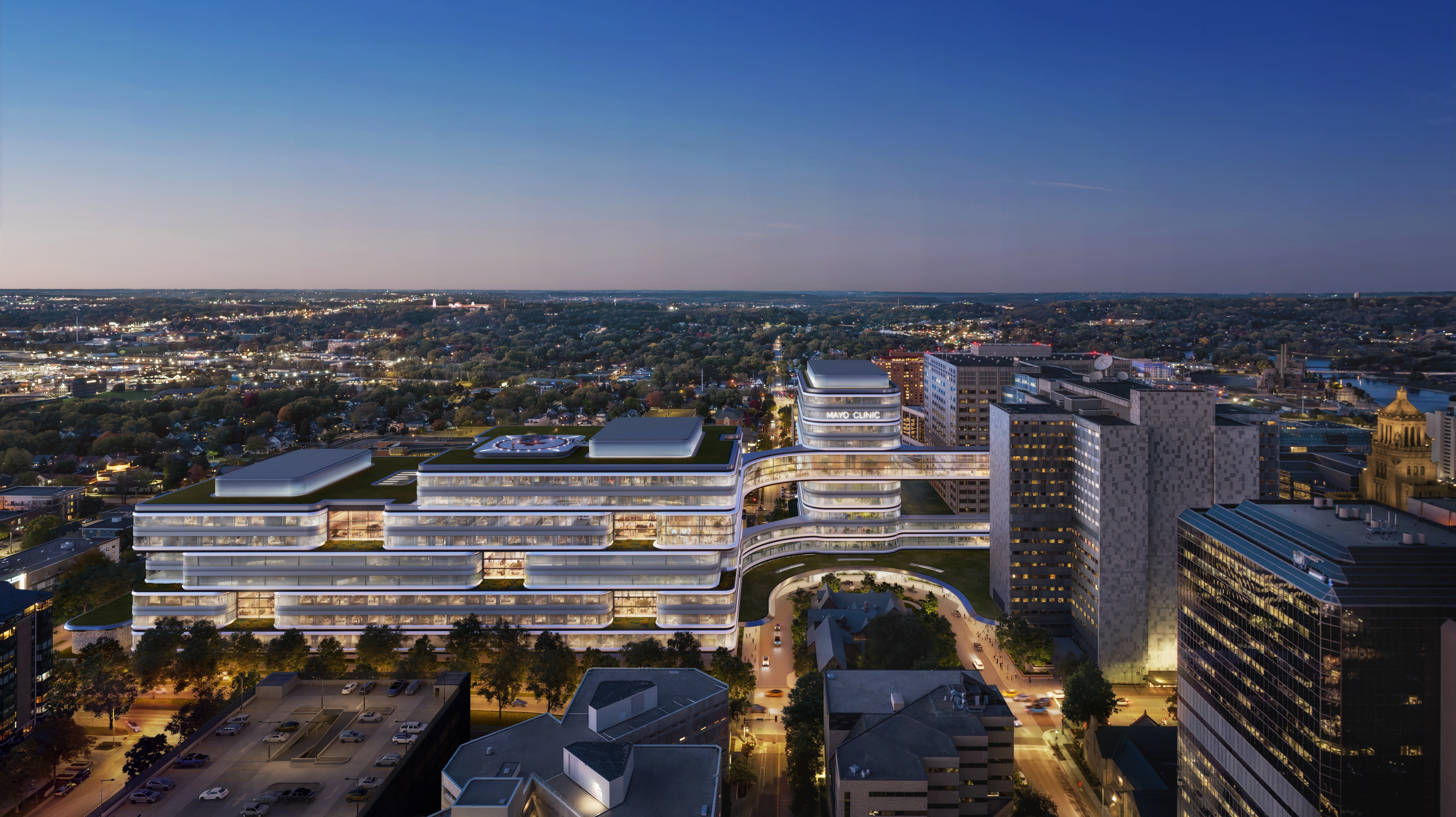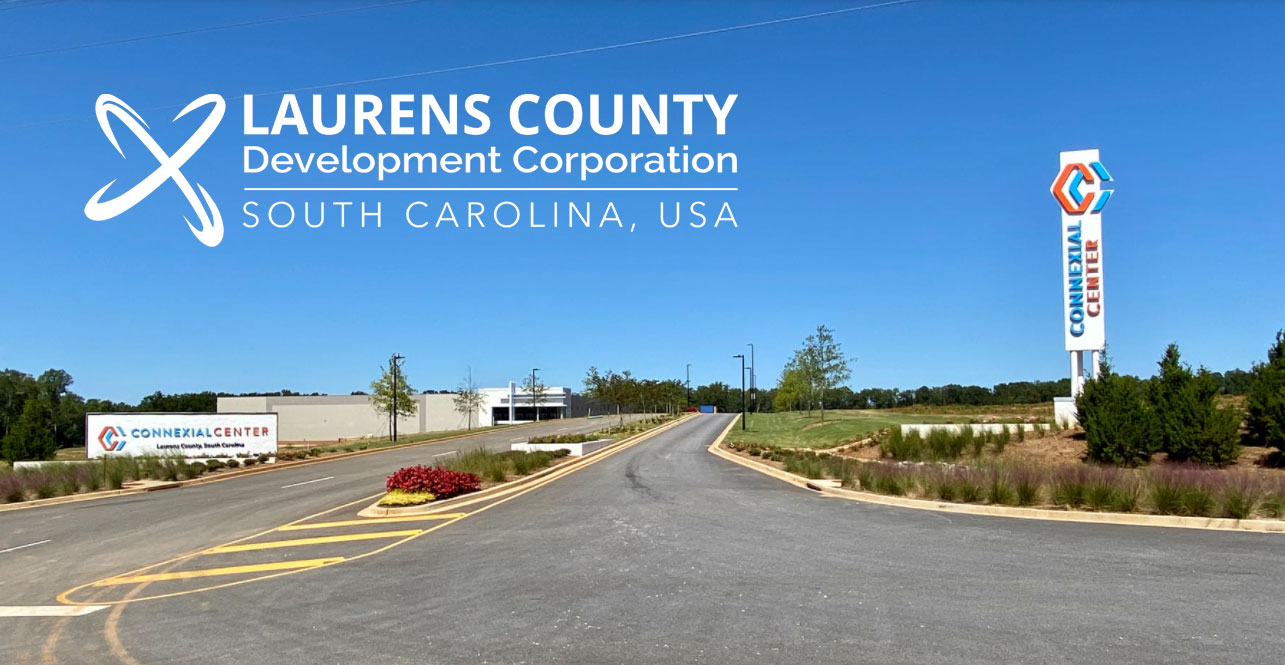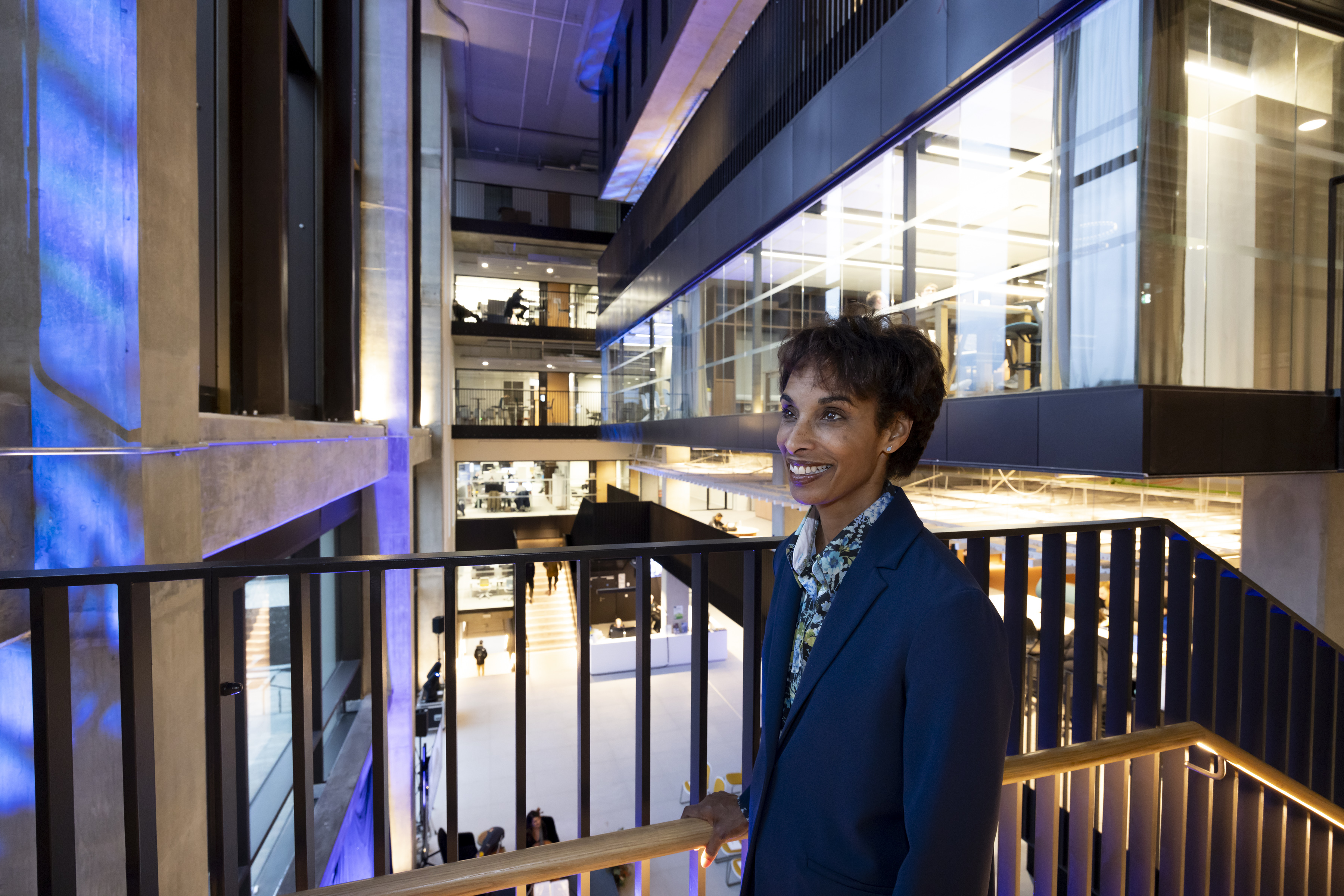|
|
|
|
|
|
|
|
|
|
|
|
|
|
ADVERTISEMENT

|
|
|
|

|
|
Mayo Clinic’s plan for its downtown campus in Rochester, Minnesota, calls for five new buildings and a $5 billion investment.
Rendering courtesy of Mayo Clinic
|
|
Last week the Mayo Clinic Board of Trustees approved a new strategic initiative called “Bold. Forward. Unbound.” It will reimagine the institution’s home campus in Rochester, Minnesota, after similar projects under the same initiative already have begun at other Mayo campuses across the nation. The plan will introduce five new buildings totaling 2.4 million sq. ft., related infrastructure and utilities — “all with future-oriented design elements,” Mayo said in a release. Total investment in the project will come to $5 billion over six years.
It’s the next stage in the evolution of the “Destination Medical Center” strategy Site Selection chronicled 10 years ago in “Now, Rochester.”
|
|
|
|
|
Connexial Center, Laurens County, South Carolina
|
|

|
|
Laurens County, South Carolina, is brimming with commercial and industrial potential along nearby Interstate I-85, recently referred to as “the Main Street of the New South.” The county’s newest industrial park, the Connexial Center, is in close proximity to I-85, I-26 and I-385 industrial corridor, which provides access to the most efficient port on the East Coast as well as interstate and rail connecting to more than 100 million consumers in a day’s drive.
One of seven in Laurens County, the Connexial Center is a Class A industrial park with 615 developable acres of prime industrial property ready for investment, development, and growth. All utilities are onsite, and all due diligence has been completed, providing an efficient path for companies looking to move operations forward, faster. In addition, the current Laurens County workforce consists of over 468,000 people within a 45-minute drive time radius.
For more information, visit www.growlaurenscounty.com.
|
|
|
|
|
|
|
|

|
|
Nanjing, China, a metro of more than 8.5 million residents, dropped 31 spots in the EIU’s list of the world’s most expensive cities to a potentially more attractive rank of No. 77.
Photo courtesy of Nanjing Municipal Tourism Commission
|
|
The Economist Intelligence Unit last week unveiled its annual Worldwide Cost of Living report on the globe’s most expensive cities. Singapore and Zurich tied at the top, followed by New York and Geneva tied for third and Hong Kong alone at No. 5. Among the findings:
- “The Mexican cities of Santiago de Querétaro and Aguascalientes were the biggest movers up the rankings as the peso strengthened against the U.S. dollar on the back of interest-rate rises and strong inward investment.” Third behind those two was San José, Costa Rica, up 38 spots but still a relative bargain at No. 70 on the most expensive cities list.
- “Chinese cities have fallen in the rankings, with four cities on our list of biggest movers down, amid slow economic recovery after the pandemic, subdued consumer demand and depreciation of the currency.” Nanjing and Wuxi both moved down by 31 spots and are tied at No. 77 in the rankings, while Beijing and Dalian fell 26 spots and are tied at No. 60.
|
|
|
|
ADVERTISEMENT

|
|
|
|

|
|
Professor Cecilia Rouse helped open the new Adam Smith Building at the University of Glasgow.
Photos courtesy of University of Glasgow
|
|
As part of the University of Glasgow’s yearlong celebration of the founder of modern economics Adam Smith’s 300th birthday, Professor Cecilia Rouse, former Chair of the Council of Economic Advisers in the White House, Katzman-Ernst Professor in Economics and Education at Princeton University and incoming President of the Brookings Institution, was on hand for the opening of the £85 million Adam Smith Business School Building and Postgraduate Taught Hub.
“Adam Smith is well-known for his belief in the virtues of the free market,” said Rouse. “But it is also his articulation of the necessity of the public sector — from roads to national security, to a legal structure, to benefits like childcare that enable full participation in our economy — that help make his vision so valuable to a new generation of scholars.” University of Glasgow Principal and Vice-Chancellor Professor Sir Anton Muscatelli said, “These new facilities will bring our community together in new ways, enabling us to respond to the changing needs of industry and job markets, while placing business skills at the heart of the student experience at Glasgow.”
At the same time, five paving stones commemorating the school’s most famous student and rector were unveiled on High Street, where the university was based from 1451 to 1870.
|

|
|
University of Glasgow students Ashley Chai, Alessandro Peacock and Prajjwal Prajjwal — who took the lead in planning student engagement with Adam Smith’s tercentenary — admire an engraved paving stone memorial on High Street in Glasgow.
|
|
|
|










